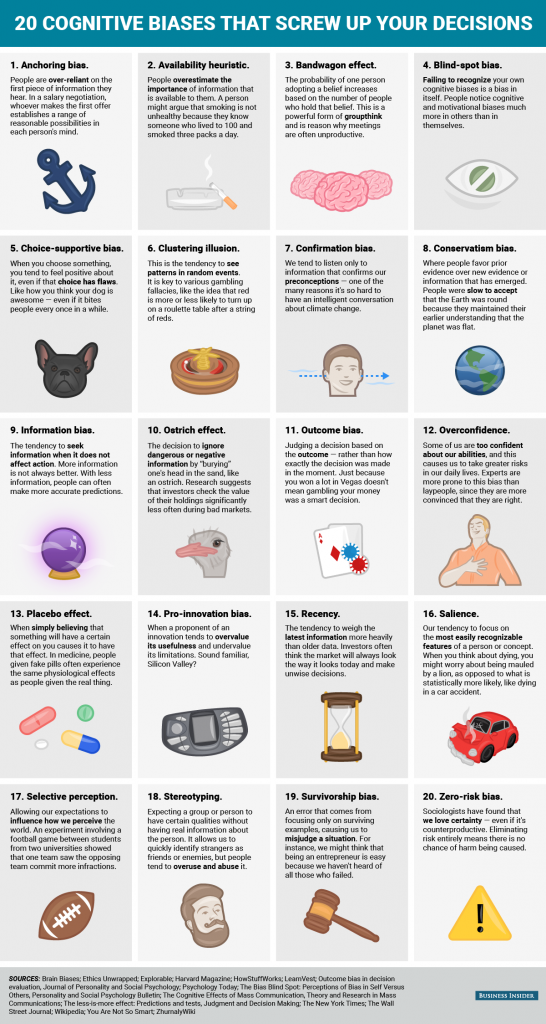Samantha Lee and Shana Lebowitz created an infographic (Business Insider) of common cognitive biases.
Entertaining, informative, but what key insight is missing from from this infographic?
The original at Business Insider is easier to read.
What missing is the question: Where do I stand to see my own cognitive bias?
If I were already aware of it, I would avoid it in decision making. Yes?
So if I am not aware of it, how do I get outside of myself to spot such a bias?
One possible solution, with the emphasis on possible, is to consult with others who may not share your cognitive biases. They may have other ones, ones that are apparent to you but not to them.
No guarantees on that solution because most people don’t appreciate having their cognitive biases pointed out. Particularly if they are central to their sense of identity and self-worth.
Take the management at the Office of Personnel Management (OPM), who have been repeatedly demonstrated to not only be incompetent in matters of cybersecurity but of management in general.
Among other biases, Office of Personnel Management suffers from 7. Confirmation bias, 8. Conservatism bias, 10. Ostrich effect, 17. Selective perception, and 20. Zero-risk bias.
The current infestation of incompetents at the Office of Personnel Management is absolutely convinced, judging from their responses to their Inspector General reports urging modern project management practices, that no change is necessary.
Personally I would fire everyone from the elevator operator (I’m sure they probably still have one) to the top and terminal all retirement and health benefits. Would not cure the technology problems at OPM but would provide the opportunity to have a fresh start at addressing it.
Cognitive biases, self-interest and support of other incompetents, doom reform at the OPM. You may as well wish upon a star.
I first saw this in a tweet by Christophe Lalanne.
